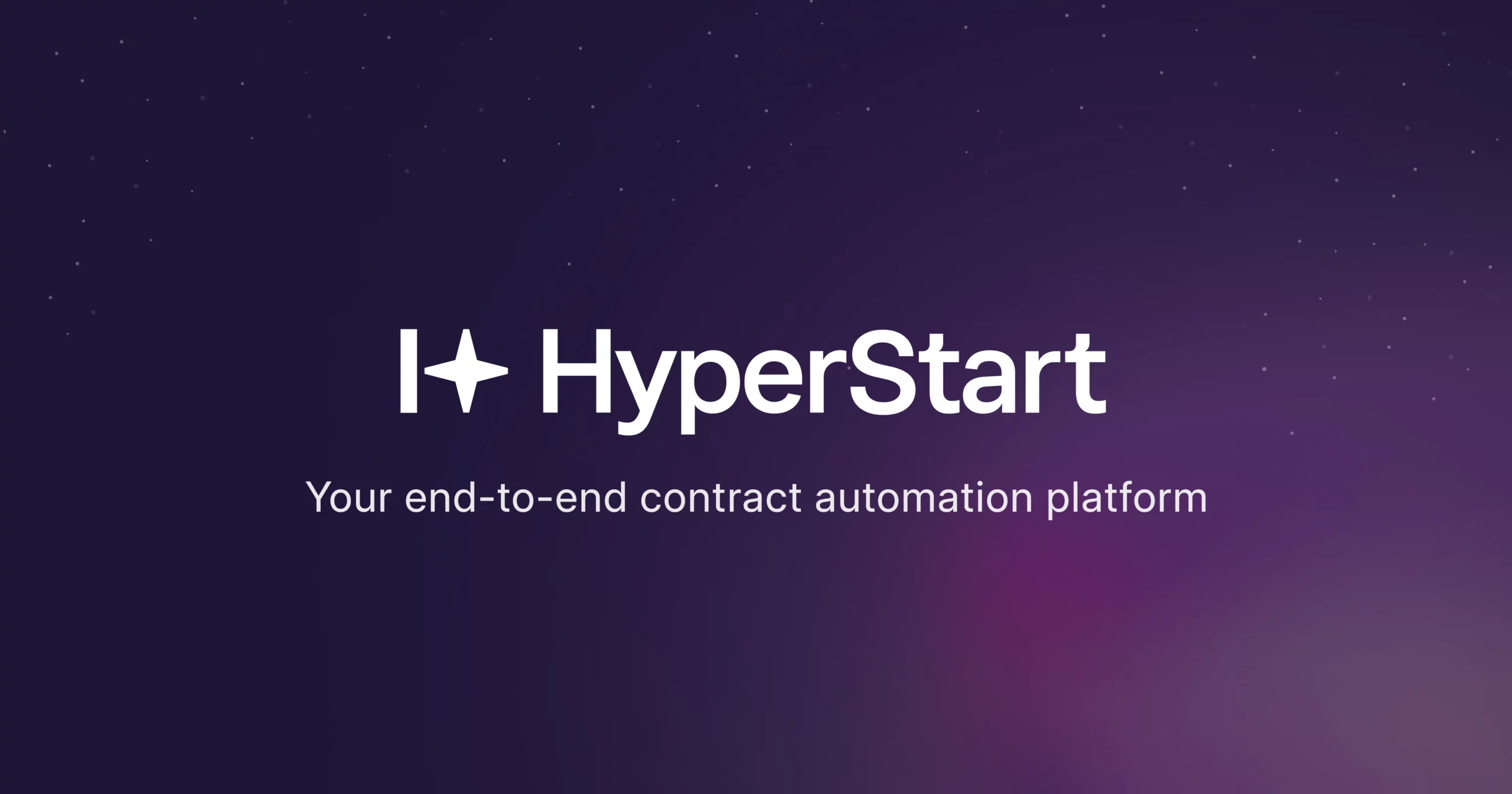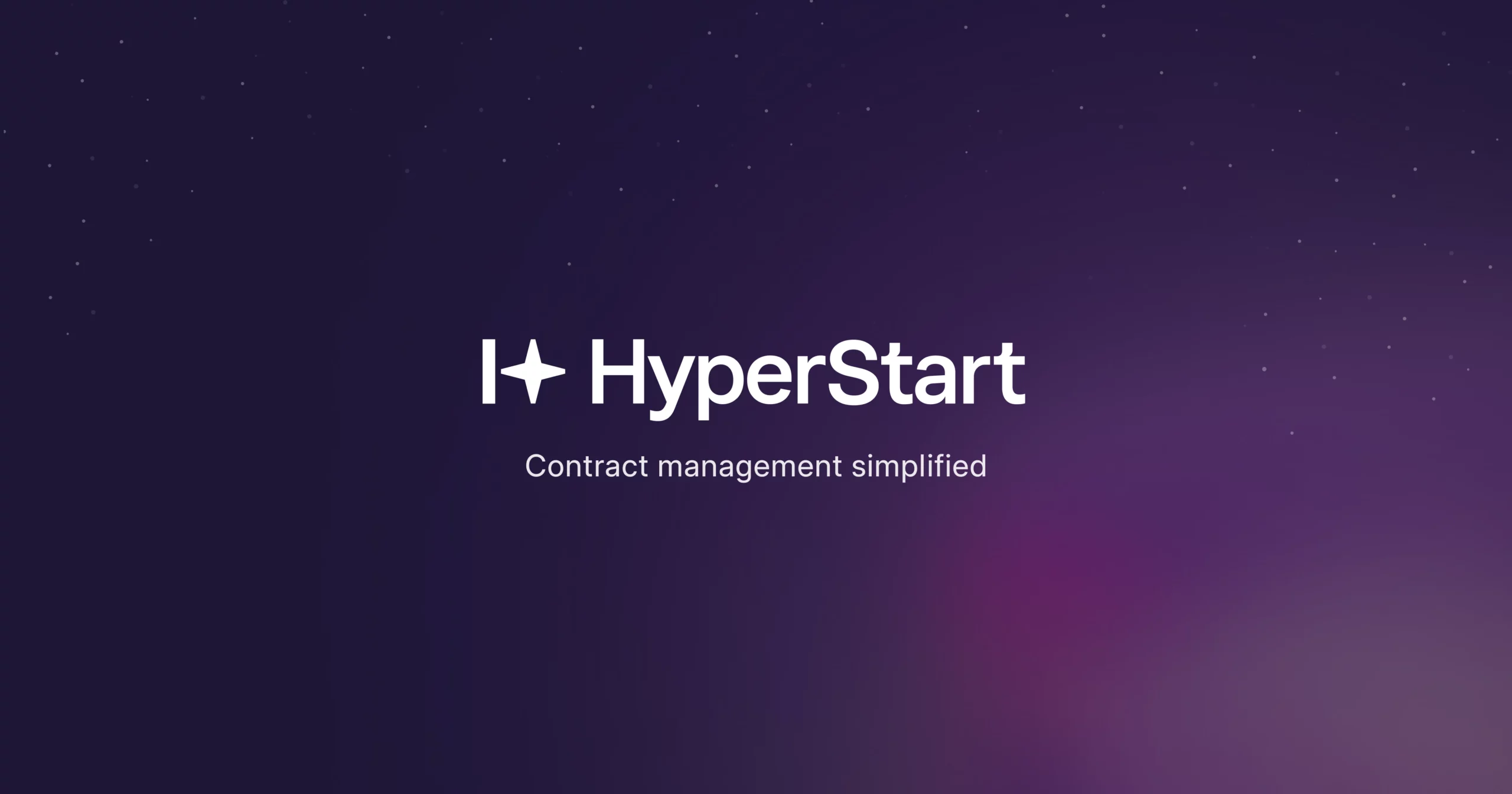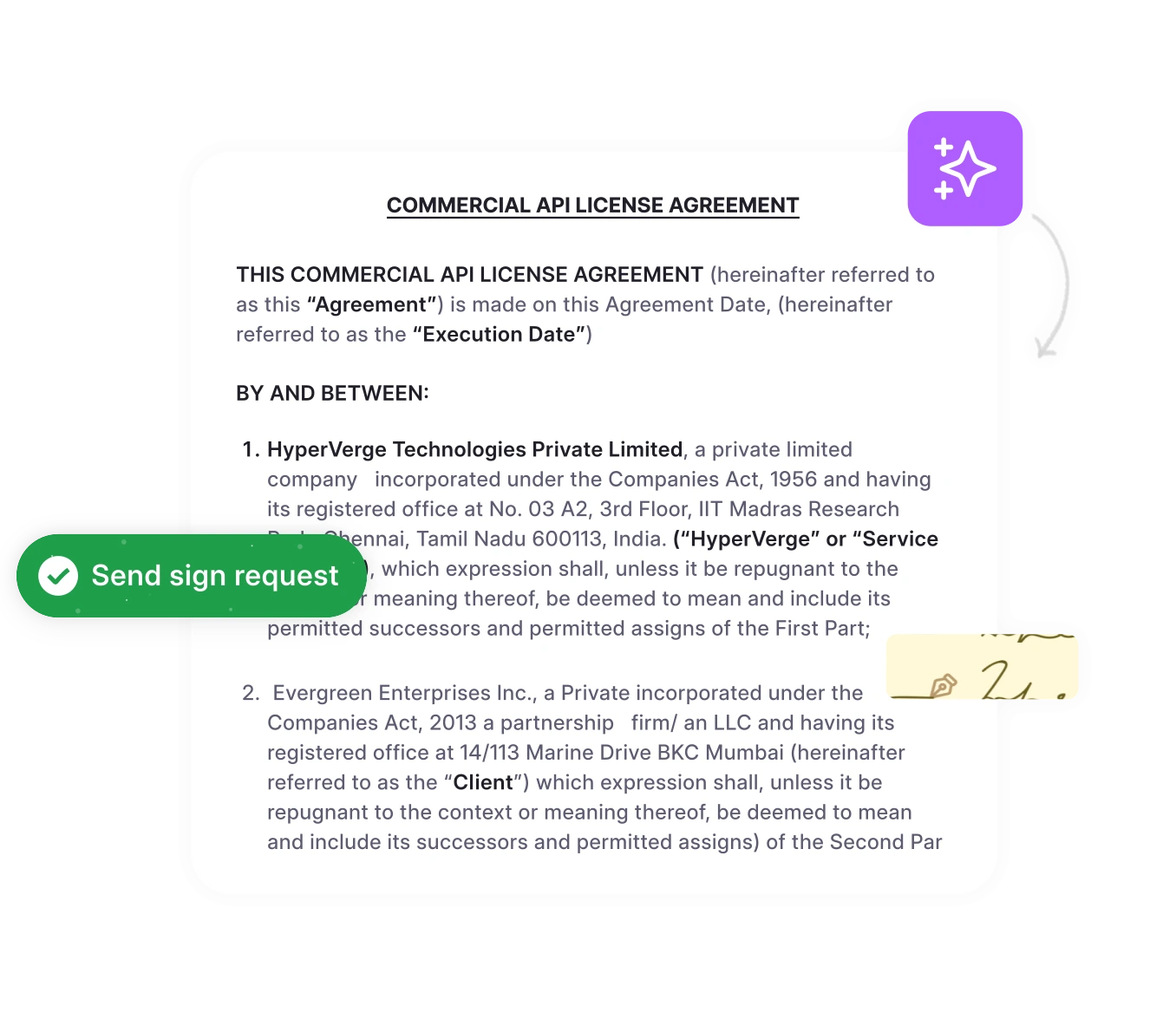The average pharmaceutical company manages hundreds of active contracts at any given time—licensing agreements worth billions, manufacturing partnerships spanning multiple countries, and research collaborations that can determine whether a promising therapy ever reaches patients.
A single poorly negotiated clause can delay a drug launch by months, expose proprietary research to competitors, or result in regulatory non-compliance that shuts down entire product lines. And in a world where every month of delay can mean both lost revenue and lost lives, contract management is foundational. It ensures compliance, drives commercial execution, accelerates timelines, and supports the delivery of life-saving treatments.
Companies that master contract management gain competitive advantages: faster time-to-market, stronger supplier relationships, better risk management, and ultimately, the ability to bring more therapies to patients who need them.
This guide will help you navigate the complexities of pharmaceutical contracts, sidestep high-risk pitfalls, and build stronger, smarter partnerships. By the time you finish reading, you’ll know how to protect your company from contract disasters and turn agreements into competitive advantages.
What are pharmaceutical contracts?
Pharmaceutical contracts are legally binding agreements that govern various aspects of drug development, pharmaceutical manufacturing, distribution, and commercialization within the pharmaceutical industry. These complex agreements require specialized legal contract management expertise to navigate regulatory requirements effectively.
Pharmaceutical contracts establish the framework for relationships between pharmaceutical companies, contract manufacturing organizations, research institutions, regulatory agencies, and other stakeholders throughout the entire drug development process. Like other commercial contracts, they require careful attention to terms that protect business interests.
According to the FDA’s official guidance on contract manufacturing quality agreements, these agreements must clearly define responsibilities between parties to ensure contract compliance with current good manufacturing practice (CGMP) requirements, making proper documentation essential for regulatory approval.
The pharmaceutical supply chain relies heavily on these agreements to:
- Establishing partnerships with third-party manufacturers and manufacturing services providers, like contract manufacturing organizations
- Defining roles throughout the drug development and drug production lifecycle
- Ensuring adherence to the FDA, EMA, and other agencies
- Protecting intellectual property and competitive advantages
- Managing manufacturing processes and new drug manufacturing practices to reduce risk
- Facilitating innovation through research and development collaborations
These contracts serve as the foundation for bringing pharmaceutical products from concept to consumers, making them essential tools for navigating the complex health care system. Understanding the elements of a contract is crucial for pharmaceutical companies to ensure all necessary components are included.
Avoid project delays
Pre-configure contract templates and redline with benchmark clauses. Close deals faster with HyperStart CLM.
Book a DemoThe types of pharmaceutical contracts and when to use them
Here’s a breakdown of the different kinds of pharmaceutical contracts and what they typically include:
| Contract Type | Purpose | Key Elements |
| Equipment and R&D licensing agreements | To access advanced manufacturing equipment and research capabilities without capital investment | – Equipment usage rights and operational parameters – Maintenance responsibilities – Research collaboration and further development terms – Cost-sharing for equipment and expertise |
| Intellectual property licensing contracts | To produce drugs and protect proprietary formulations or processes while generating revenue through licensing | – Patent usage and geographical scope – Trademark licensing – Trade secret protection – Royalty structures – Exclusivity terms |
| Outcomes-based and value-based contracts | To link drug reimbursement to actual patient outcomes, rewarding effectiveness over volume | – Outcome-based performance metrics – Risk-sharing mechanisms – Data collection requirements – Pricing adjustments based on effectiveness – Long-term outcome monitoring |
| Cost cap and indication-based management contracts | To control pricing and ensure drugs are used for appropriate patients | – Maximum cost thresholds per patient – Definitions of patient populations – Utilization management protocols – Pricing flexibility – Therapeutic outcome criteria |
| Collaboration and joint venture agreements | To pool resources and expertise for joint drug development or market entry into new treatments, like targeted and gene therapies | – Partner resource contributions- Profit/loss sharing models – Governance and decision-making rules – Joint IP ownership – Territorial market access rights |
| Technology transfer agreements | To transfer manufacturing processes to a new facility while ensuring quality | – Process documentation and specs- Personnel training programs – Validation protocols – IP protection – Implementation performance guarantees |
| Product supply agreements | To ensure a stable, long-term supply of raw materials or finished products | – Purchase volume commitments – Quality specs and acceptance criteria – Delivery timelines – Contingency plans for disruptions – Cost and pricing adjustment mechanisms |
Managing these complex payer relationships requires dedicated payer contract management software to ensure accurate tracking and compliance.
Stop managing contracts in isolation
HyperStart CLM connects your contract management with your entire pharmaceutical operation.
Book a DemoMost negotiated clauses in a pharmaceutical contract
Your pharma contract may look airtight until your IP gets leaked, or a supplier walks mid-project. Here are the must-have clauses that protect your science, your business, and your bottom line. Building a comprehensive contract clause library helps ensure you never miss critical protections.
1. Third-party licensing and intellectual property rights protection
Keep your innovation in your hands.
Pharma contracts often involve years of proprietary R&D. If your IP clause isn’t airtight, you might lose exclusive control over the very drug you developed. What to include:
- Clear ownership of all background and foreground IP
- Written notice if third parties infringe on IP
- Joint defense terms to fight infringement
- Territory restrictions for licensed use
2. Confidentiality and non-disclosure obligations
Protect your formulations, trial data, and market strategy.
You’re sharing sensitive info from molecule structures to clinical results. Without airtight NDAs, one slip could lead to leaked data or a competitive breach. Include:
- Definitions of confidential info (not just “marked documents”)
- Disclosure exceptions (e.g., regulatory requirements)
- Employee and contractor binding terms
- Return/destruction of data after contract ends
3. Representations and warranties
Don’t get blindsided by false claims.
These clauses spell out what each side promises—legally and factually. If someone misrepresents data or performance, this is where you get recourse. What to lock in:
- Factual statements (e.g., legal authority, no IP violations)
- Good faith obligations
- Risk allocation for inaccuracies
- Requirements to disclose material changes
On how CMOs need contract terms that clearly define their medical decision-making authority, not just vague expectations.
“The agreement needs to give the CMO confidence that he or she has critical decision-making and independence on medical activities to make the right decisions, even when management may strongly feel otherwise.”
Contracts that fail to delineate this independence can erode trust and lead to early exits, which can be costly for both the company and the product timeline.
4. Trademark and brand protection
You don’t become a beloved brand if patients and providers don’t trust you.
Patients and providers associate your drug’s name with safety. Trademark clauses ensure that partners don’t misuse or dilute your brand equity. Must-haves:
- Usage permissions and restrictions
- Quality standards for brand integrity
- Co-branding terms, if applicable
- Marketing guidelines for a consistent voice
5. Indemnification and liability allocation
Who pays when something goes wrong?
This clause decides who takes the hit. Checklist:
- Third-party claim coverage and indemnification
- Defense obligations (including legal costs)
- Caps on liability for balance
- Insurance requirements to back indemnities
6. Term, termination, and transition rights
Have a clean break plan before things go bad.
Sometimes relationships fail. Maybe it’s non-performance, maybe it’s insolvency. This clause ensures you exit without chaos. Include:
- Specific termination triggers
- Notice and cure periods
- Transition support (e.g., transferring patient data)
- IP handover terms
- Survival of obligations post-termination
7. Audits and inspection rights
Do your due diligence.
Even the best vendors can cut corners. Audit rights give you a legal way to verify compliance with GMP, data integrity, and quality. Cover:
- Facility inspections and record access
- Reasonable notice requirements
- Staff interviews and documentation reviews
- Corrective action protocols
- Regulatory cooperation language
8. Publications and data management
Publish smartly. Protect your edge.
Your research is valuable, but premature publication can cost you a competitive advantage or breach regulatory rules. Must-cover elements:
- Pre-publication review rights
- Confidentiality of raw data and trial methods
- Regulatory disclosure procedures
- Author attribution protocols
- Ownership of all clinical data outputs
9. Fee structures and payment terms
Align cash flow with outcomes.
Pharma deals are complex—milestone payments, royalties, penalties. Payment terms need to be detailed and flexible. According to McKinsey’s latest industry research on procurement efficiency, AI-powered contract management can reduce procurement management costs by 5 to 10 percent through automated generation of RFPs, purchase orders, and improved supplier performance monitoring. Include:
- Fee-for-service vs. milestone-based models
- Late payment penalties and delivery bonuses
- FX protections for international deals
- Secure methods (e.g., LC, guarantees)
- Pricing adjustments for long-term contracts
To achieve a ‘win-win’ result, it’s important to understand what motivates each side at the negotiating table. Armed with this information, buyers (drug developers) and sellers (manufacturers) are better equipped to reach a fair arrangement.
What are the challenges in pharmaceutical contract management? [+ solutions]
Let’s look at the biggest challenges companies face and the practical solutions that work. These pharmaceutical-specific issues are part of broader contract management challenges that many organizations encounter.
| Challenges | Smart Tech Solutions |
| Regulatory standards like the FDA, EMA, and ICH are always evolving. What’s compliant today might be outdated tomorrow. Staying audit-ready while adapting to constant change is no small feat. | – Built-in, auto-updating templates – FDA-ready audit trails – Smart alerts before you slip up |
| Co-developments, joint R&D, global partners—one vague clause and your patents are up for grabs. | – Role-based access with version control – IP-specific workflows – Encryption is baked into every doc – Secure collaboration spaces |
| One supplier is delayed, and patients don’t get their meds. Multiple partners = multiple points of failure. | – Real-time supplier performance dashboards – Risk scoring & mitigation workflows – Quality agreement automation – Robust supplier integrations |
| Legal wants protection, bizdev wants speed, procurement wants savings—getting everyone aligned takes forever. | – Centralized repository with version control – Pre-approved clause libraries – Automated review/approval workflows – Milestone & renewal tracking |
How HyperStart CLM transforms pharmaceutical contract management
Pharmaceutical organizations can use HyperStart to move fast with contracts without compromising on compliance or safety. Our platform offers comprehensive contract management software features specifically designed for the life sciences industry. Here’s how it transforms the way you handle contracts:
1. Pre execution:
HyperStart CLM continuously monitors regulatory changes from the FDA, EMA, and other agencies worldwide, automatically alerting your team when contract updates are needed.
- Pre-built compliant templates that incorporate current regulatory requirements
- Audit trail documentation that satisfies the most demanding regulatory inspections
- AI-redlining for contract review with pre-approved fallback positions
2. Post-execution: Unlock contract intelligence
HyperStart CLM contract analysis helps you identify risks, monitor performance, and ensure reliable product delivery to patients through effective supplier contract management.
- Real-time supplier performance monitoring with automated contract metadata extraction
- Proactive opportunity and risk assessment to unlock the full potential of your contracts
- Comprehensive dashboards with key metrics and trends through an intuitive contract management dashboard interface
- Automated compliance reporting for regulatory submissions
3. Execution
HyperStart CLM analyzes contracts to provide insights that drive better business decisions and improved performance through advanced capabilities.
- Native and eSignature integrations that are eIDAS and UETA compliant
4. Integrate with your existing systems
HyperStart CLM integrates with your existing pharmaceutical systems to create a connected operation where information flows seamlessly between platforms.
- ERP system connectivity for synchronized financial and operational data
- Document management integration for centralized information access
- CRM system integration for enhanced customer relationship management
- Other productivity suites for seamless collaboration, org-wide
HyperStart CLM turns your contracts from a necessary burden into a strategic advantage. Pharmaceutical companies using our platform typically see:












